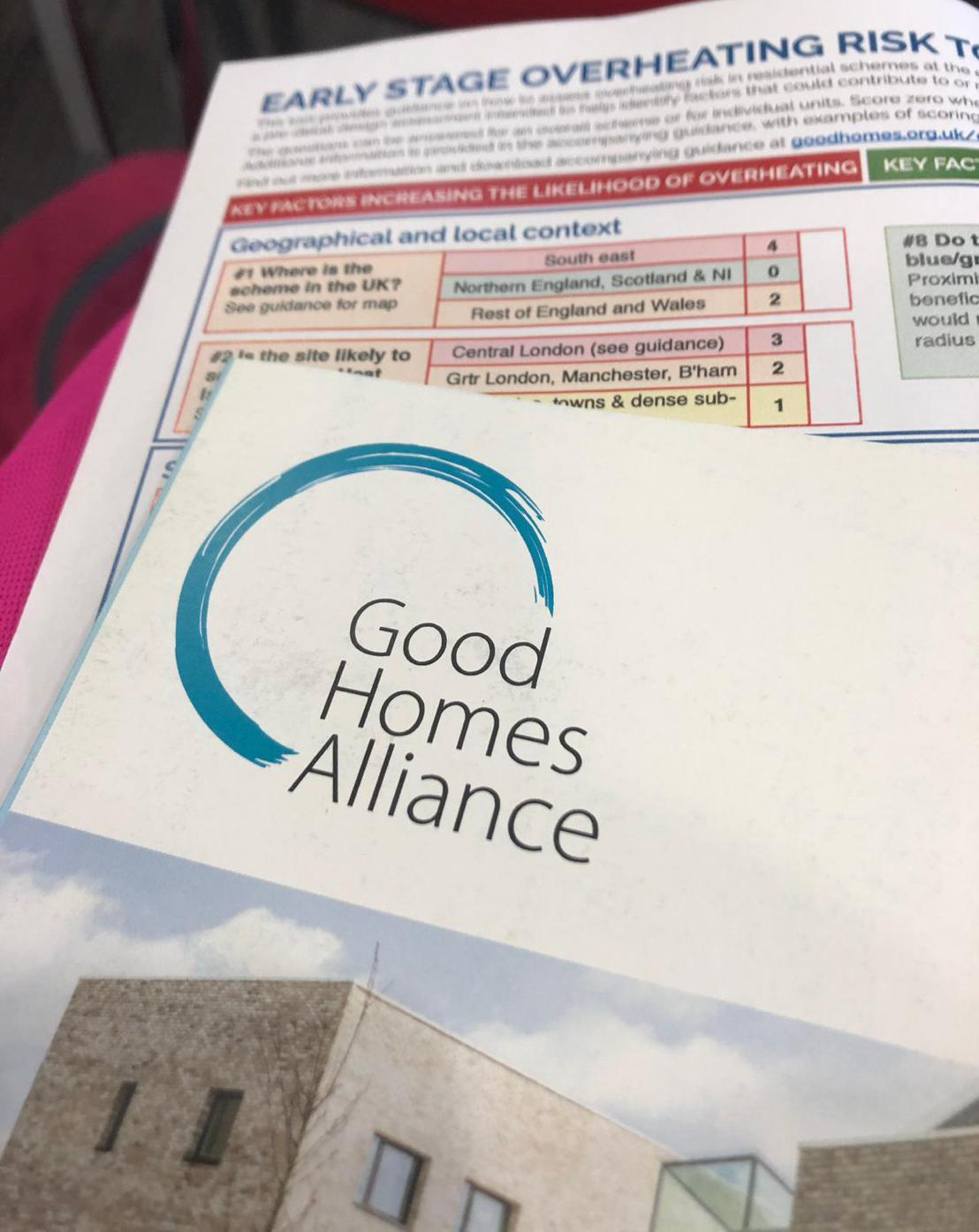Rupert Kazlauciunas, Technical Product Manager, MVHR, Zehnder Group UK
July 2019
 On 16th July we saw the launch of the Good Homes Alliance (GHA)’s new tool to assess the risk of overheating in new homes. The tool, to be used by planners and design teams at the very early stages of project planning, allows users to calculate the level of risk of overheating, based on a number of causative and mitigating factors.
On 16th July we saw the launch of the Good Homes Alliance (GHA)’s new tool to assess the risk of overheating in new homes. The tool, to be used by planners and design teams at the very early stages of project planning, allows users to calculate the level of risk of overheating, based on a number of causative and mitigating factors.
Taking geography, population density, barriers to window opening and likelihood of solar gains into account, the tool enables project planners to calculate how much risk there is of overheating. They can then deduct scores for every available mitigating factor, such as proximity to green and blue infrastructure, access to external and internal shading and features which support effective ventilation.
A welcome step forward
Since CIBSE’s TM59 brought together TM52 and CIBSE Guide A to create a universal document to encourage measures to control overheating in 2017, there have been several calls across the industry for an initiative to support those planning and building new homes. This tool is certainly an excellent step in the right direction. It’s been tested by several local authority and planning teams, and developed with the support of a steering committee including government-level individuals, Greater London Authority (GLA) representatives and industry professionals all working on the frontline in terms of needing to combat the risk of overheating when planning and building new homes.
What next?
Now, however, comes the difficult part. With the launch of any new tool or guidance comes the need for clear explanations as to why it’s been introduced, how it will help and, crucially, how to use it. For a tool like this to really make a positive impact, it has to be embraced and used by all relevant parties. Architects, designers, housebuilders, developers, local authorities, project managers and case officers need to be on board. And it’s also vital that all other members of the wider building services industry, from consultants and contractors to manufacturers and installers, are aware of the tool and support its use, even if they are not actively using it.
So how do we do this? Leading by example is key. Organisations such as CIBSE and the GHA are clearly invested in resources such as this tool as a means of addressing and designing out overheating, but unless the likes of RIBA, CABE and local authority and government groups give it their backing, there will not be the level of commitment and consistency required to see this through to a satisfactory conclusion.
An opportunity not to be missed
Thanks to industry research and initiatives such as TM59, now have the technology, skills and opportunity to apply advanced thermo-modelling techniques to every building which is planned and constructed to design out overheating. Add the pre-planning insight that this tool offers, and we are in a stronger position than ever to combat the problem head on before it’s too late in the design process.
The pressure is now on to ensure we work together: listen to each other and the different challenges and obstacles we all face in the planning stages and find a common ground. For example, if access to shading or the ability to open windows is a priority for architects, but is deemed impossible by developers or local authorities, it’s those early discussions that will identify these gaps and encourage us to find solutions which not only work for all involved, but which ultimately result in the creation of safe, comfortable and healthy homes for occupants.
Find out more about Zehnder and download their overheating in homes brochure at www.zehnder.co.uk/overheating-in-homes.
This article is a blog post authored by one of our members. Click here to see the GHA member directory. find out the benefits of membership and join our alliance today.
